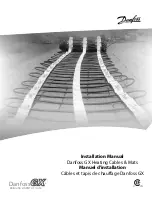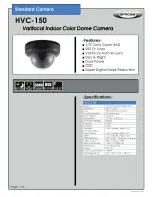
32
Installation
3-2-6
Installing nBy/S readers
The wall-mount nBy/S reader is suitable for indoor and outdoor installation.
Insert the two anchor screws [A] (included) into the two screw locations [B] on the
plastic backplate.
ATTENTION!
In order to avoid the risk of piercing the silicone seal [C], and thus jeopardizing the
waterproofing of the enclosure, insert the screws before fitting the seal.
3-2-7
Installing nBy/X readers
The Universal flush-mount nBy/X (
Patent Pending
) has been especially designed to
integrate with all brands of cover plates [A]. Drill two holes [B] for the light guide [C].
Use the adhesive drill-pattern (see opposite) to mark the drilling locations accurately.
1. Ensure that the centre of the cover plate coincides with the crossing of the axes x
and y on the drill-pattern. In this way, the two drilling locations (1 x 7mm diame-
ter and 1 x 8mm diameter) will be positioned precisely.
2. Using the screw [D], secure the reader components inside the cover plate.
3. Insert the cover plate (with the reader already assembled) into the light switch
box.
DISLODGEMENT TAMPER
The nBy/X reader is not equipped with built-in dislodgement-tamper protection.
However, the following section describes how you can protect nBy/X reader against this
kind of tamper.
In order to comply with certification (Level 2 - IMQ Security Systems), all the system
peripherals must be protected against tamper. Installation of a microswitch will allow
the reader to signal tamper events. To obtain this type of protection, work carefully
through the following steps.
1. Use a microswitch with at least two normally-open contacts [A]. The one shown
in figure 3 has 3 contacts: COM-NO-NC.
2. Configure one of the terminals as follows: Input; 24H; Description = “Tamper
reader x”; single balancing with 6K8
W
[resistance [B]; unlimited alarm cycles.
Assign the duly programmed terminal to at least one keypad partition.
3. Using 2 wires, connect the microswitch to the 24H input terminal.
4. On the microswitch:
4.1. using one of the two wires, connect the common contact (COM) to the GND
terminal of the 24H terminal [C].
C
A
B
A
B
C
A
D
B
D
C
B
A
















































